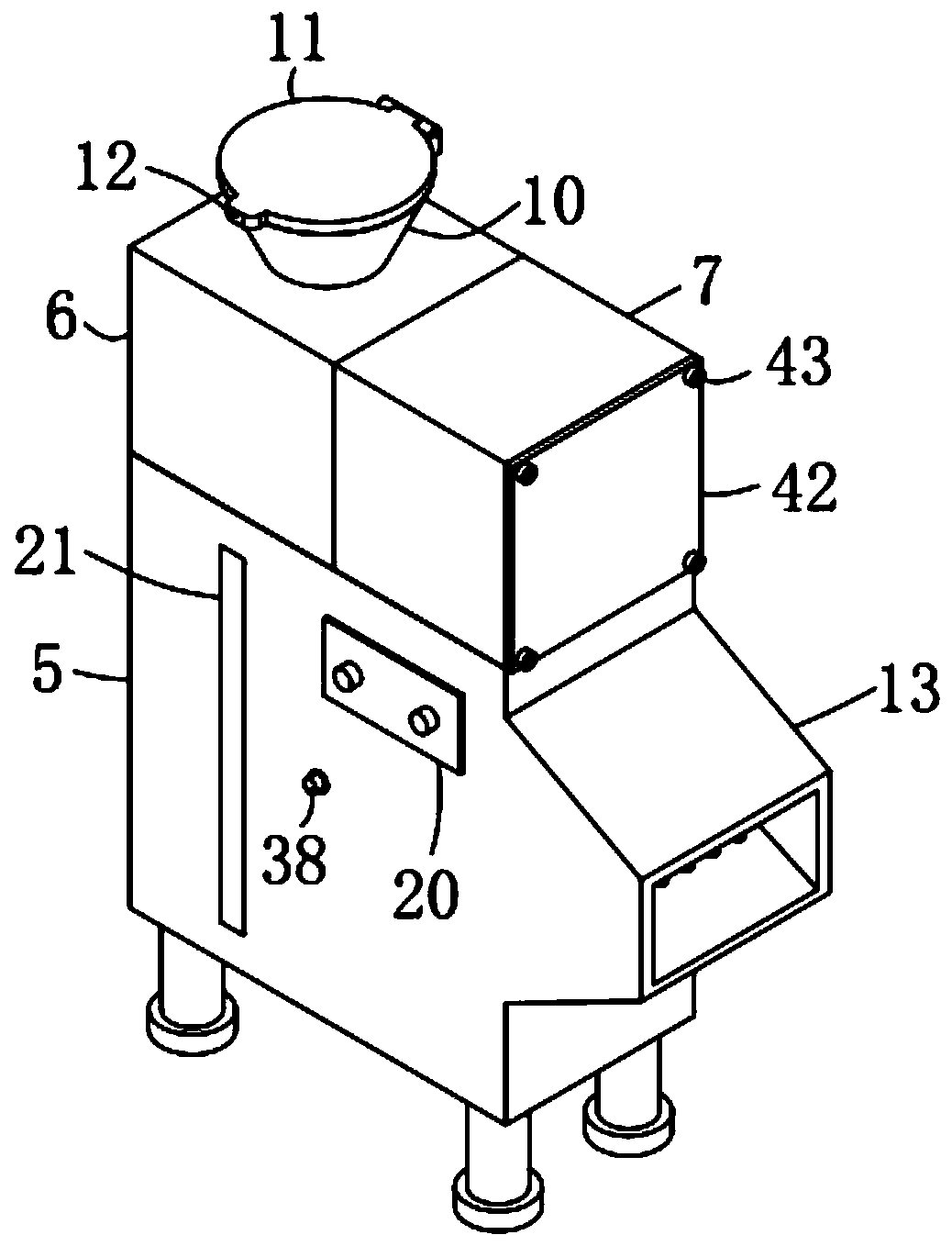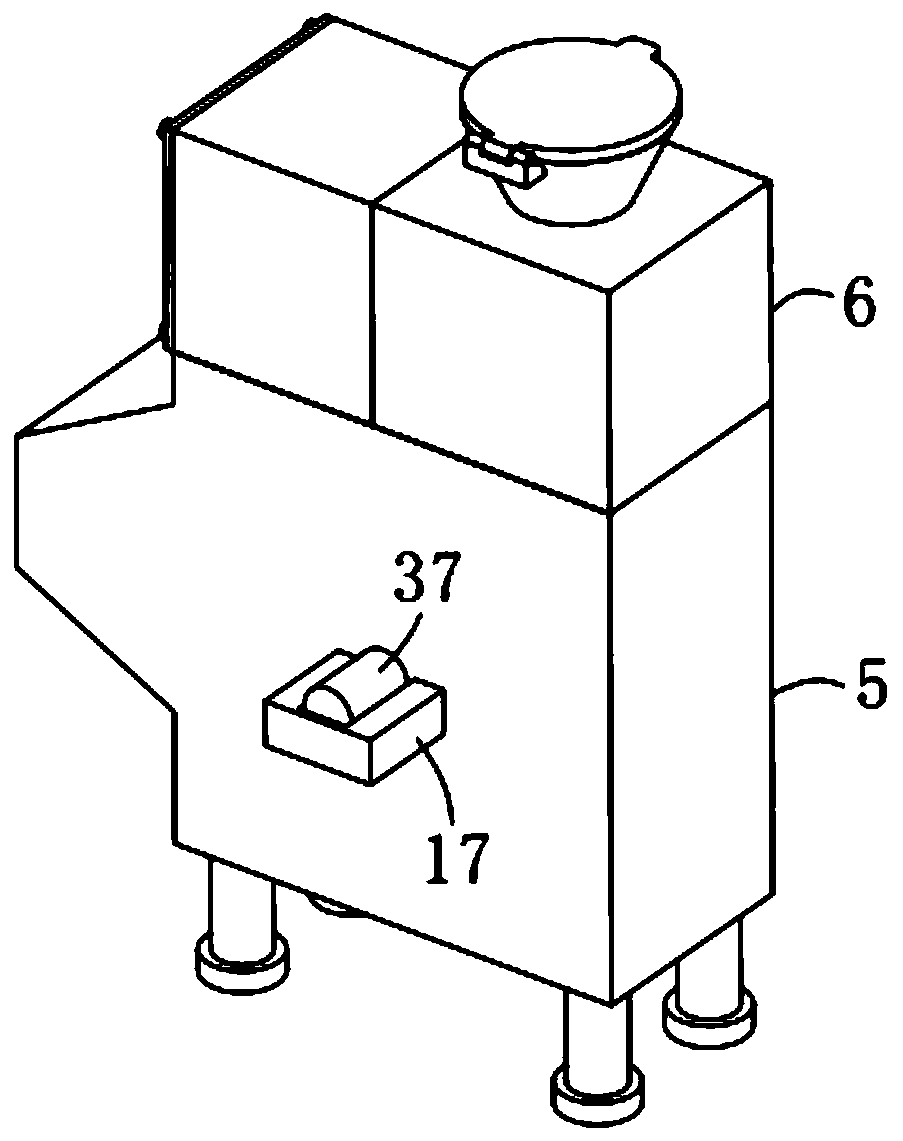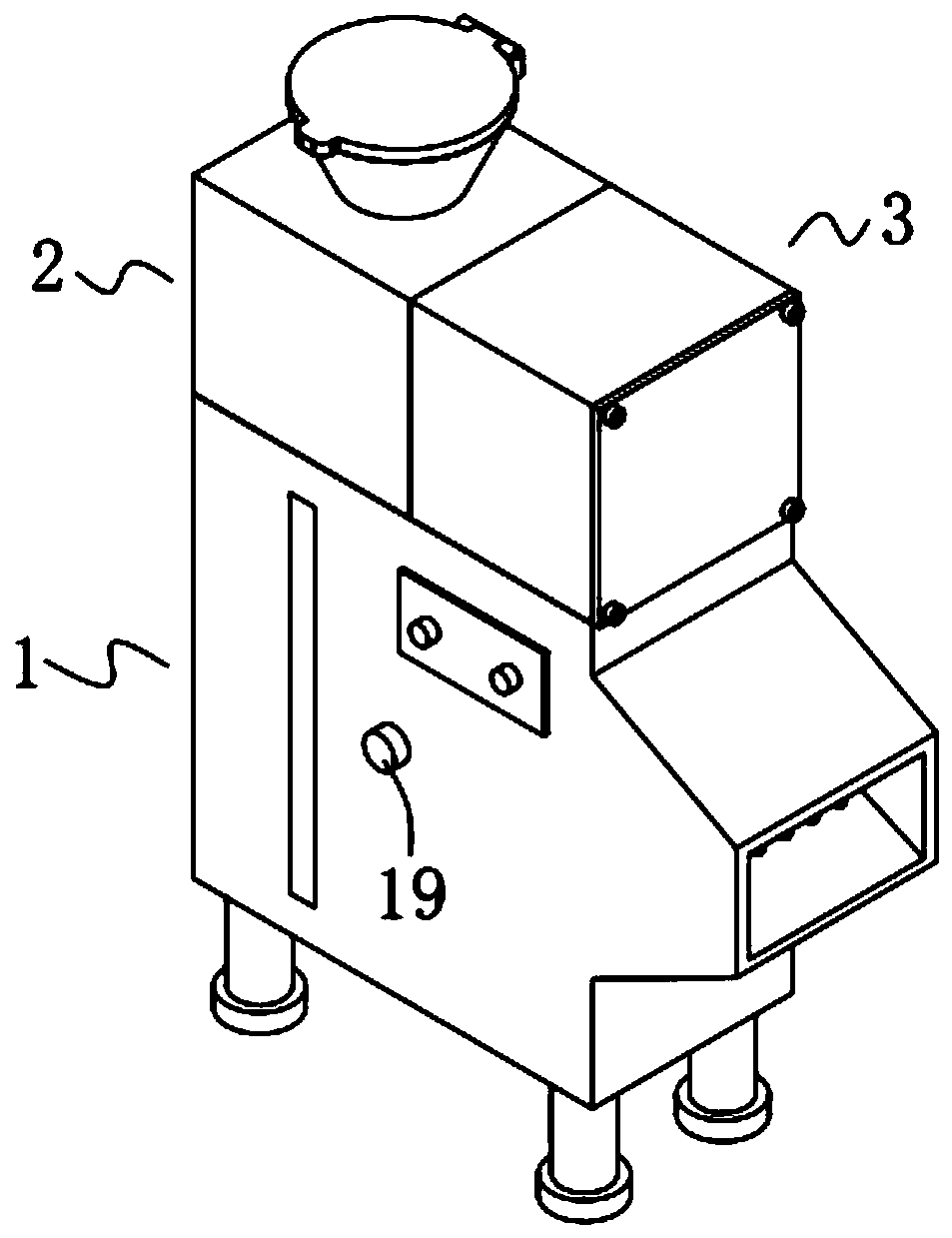Gynecological garbage treatment device and protective layer thereof
A technology of a garbage disposal device and a protective layer, applied in the field of medical devices, can solve the problems of inappropriate disinfection of medical garbage, cumbersome treatment process, and impact on service life, etc.
- Summary
- Abstract
- Description
- Claims
- Application Information
AI Technical Summary
Problems solved by technology
Method used
Image
Examples
Embodiment 1
[0054] A gynecological waste disposal device, such as Figure 1-3 As shown in and 8, it includes a disinfection treatment part 1, a feeding part 2, a crushing part 3 and a feeding part 4, the disinfection treatment part 1 is arranged at the bottom, and the feeding part 2 is arranged on the top of the disinfection treatment part 1 , and the feeding part 2 and the disinfection processing part 1 are connected and arranged, the crushing part 3 and the feeding part 2 are arranged in cooperation with each other, and the crushing part 3 is located on the upper part of the disinfection processing part 1, so The feeding part 4 and the disinfection treatment part 1 are arranged in cooperation with each other.
[0055] By adopting the above-mentioned technical scheme, the interior of the disinfection treatment part 1 is used to hold the disinfectant solution, and the disinfectant solution is used to soak the medical waste generated by the gynecology department to achieve the purpose of d...
Embodiment 2
[0077] The difference from Example 1 is that the inner surface and the outer surface of the first box body 5 are provided with a protective layer, and the protective layer is prepared by the following method:
[0078] Take the following raw materials and weigh them by weight: 20 parts of epoxy resin, 8 parts of calcium carbonate powder, 10 parts of polytetrafluoroethylene, 12 parts of polyamide resin, 8 parts of nano-silver powder, 11 parts of aluminum oxide particles, 12 parts of urushiol 2 parts, 12 parts of alcohol ester, 2 parts of triethanolamine, 2 parts of emulsified silicone oil and 30 parts of water;
[0079] S1. Add the weighed urushiol, alcohol ester dodeca, triethanolamine, emulsified silicone oil and water into the mixer and stir for 20min, and the stirring speed is 600r / min, so as to prepare the mixed solution;
[0080] S2. Add epoxy resin, calcium carbonate powder, polytetrafluoroethylene, polyamide resin, nano-silver powder and aluminum oxide particles into the...
Embodiment 3
[0086] The difference with embodiment 2 is the preparation of protective layer, and its specific preparation method is as follows:
[0087] Take the following raw materials and weigh them by weight: 24 parts of epoxy resin, 10 parts of calcium carbonate powder, 11 parts of polytetrafluoroethylene, 14 parts of polyamide resin, 9 parts of nano-silver powder, 13 parts of aluminum oxide particles, 14 parts of urushiol 3 parts, 12 parts of alcohol ester, 3 parts of triethanolamine, 3 parts of emulsified silicone oil and 40 parts of water;
[0088] S1. Add the weighed urushiol, alcohol ester dodecane, triethanolamine, emulsified silicone oil and water into the mixer and stir for 25min at a stirring speed of 650r / min to prepare a mixed solution;
[0089] S2. Add epoxy resin, calcium carbonate powder, polytetrafluoroethylene, polyamide resin, nano-silver powder and aluminum oxide particles into the crusher for crushing until the particle diameter of the material is not greater than 10...
PUM
 Login to View More
Login to View More Abstract
Description
Claims
Application Information
 Login to View More
Login to View More - R&D
- Intellectual Property
- Life Sciences
- Materials
- Tech Scout
- Unparalleled Data Quality
- Higher Quality Content
- 60% Fewer Hallucinations
Browse by: Latest US Patents, China's latest patents, Technical Efficacy Thesaurus, Application Domain, Technology Topic, Popular Technical Reports.
© 2025 PatSnap. All rights reserved.Legal|Privacy policy|Modern Slavery Act Transparency Statement|Sitemap|About US| Contact US: help@patsnap.com



